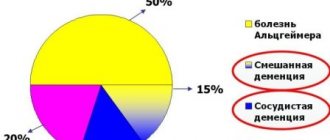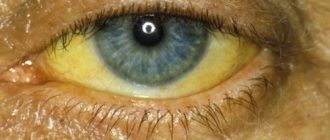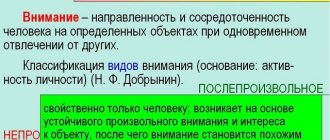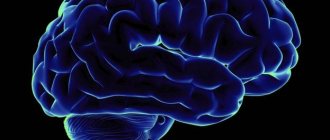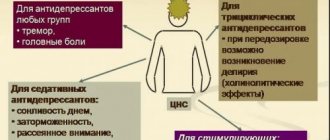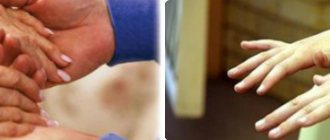How to treat hallucinations: basic principles
Important!
If hallucinations occur in one of your relatives and friends, before qualified treatment is started, make every effort to ensure the safety of the patient and those around him. Often patients with hallucinations commit actions that are dangerous both for them and for people nearby. Often patients with hallucinations commit actions that are dangerous both for them and for people nearby. Treatment of acute hallucinations is unconditionally carried out in a hospital. The patient is first examined by a neurologist, narcologist and, of course, a psychiatrist. The list of consultations and related examinations may vary depending on the individual characteristics of a particular case.
The procedure for treating hallucinations is also determined taking into account the patient's condition. Elderly people undergo therapy aimed at eliminating the causes that prompted the appearance of hallucinations. If the latter are caused by any disease, its treatment is carried out in parallel.
Typically, neuroleptics and antipsychotic drugs are used to treat hallucinations in the elderly. Taking these may cause the following side effects:
- extrapyramidal disorders. These include, first of all, akathisia, dyskinesia, and dystonia;
- anticholinergic effects;
- disturbances in the processes of defecation and urination;
- postural hypotension;
- hypersalivation;
- changes in the function of the liver, gastrointestinal tract, digestive system;
- rapid weight gain;
- dysfunction of the pancreas, up to pancreatic necrosis and acute pancreatitis.
The doctor conducts the necessary examinations and draws up a program specifically for the patient, taking into account the individual characteristics of his condition.
Additionally, drugs from the group of detoxifiers, tranquilizers and sedatives can be used to treat hallucinations. During the period of remission, patients are usually recommended cognitive-behavioral and psychosocial therapy.
What are the causes of illness in elderly patients?
The appearance of any hallucinations indicates a significant impairment of mental activity, which can develop with:
- various mental pathologies, for example, epilepsy or schizophrenia;
- psychoses of infectious origin;
- hallucinations due to acute or chronic intoxication;
- with organic brain damage, especially in the presence of tumors;
- when exposed to hallucinogens;
- when taking certain medications (certain antibacterial and antiviral drugs, sulfonamides, drugs used to treat tuberculosis, anticonvulsants, antihistamines and antihypertensive drugs, psychostimulants, tranquilizers and many others);
- with sensory and social isolation;
- temporary visual hallucinations in older people can be caused by taking medications with psychodysleptic properties;
- with disturbances in the mechanism of alternation of sleep and periods of wakefulness.
It is worth noting that psychopathological symptoms among elderly patients are observed under various conditions. The clinical manifestations of these disorders depend on the underlying disease.
The acute onset of senile hallucinations is characteristic of delirium; it can also develop with various somatic diseases, as well as with substance abuse or when taking certain drugs that can cause psychosis. The chronic course of hallucinations and their stable nature are characteristic of chronic schizophrenia, as well as psychoses developing against the background of chronic somatic pathology or Alzheimer's disease.
In addition, hallucinations are quite common in Parkinson's disease. Thus, approximately 20−60% of patients develop psychotic disorders. In most cases, they are caused by external influences, although they can also occur due to internal disorders, for example, during the development of a neurodegenerative process that develops in the nerve cells responsible for the synthesis of dopamine.
It is worth noting that most antiparkinsonian drugs, if taken incorrectly, can cause the development of psychotic symptoms. When treating hallucinations that develop against the background of Parkinson's disease, we must remember that older people have increased sensitivity to antipsychotic drugs. In this case, clozapine becomes the drug of choice in most cases.
In addition, cholinesterase inhibitors can be used, which lead to a reduction in psychotic symptoms and improve cognitive function in this pathology. It is worth noting that there are a number of other factors that increase the likelihood of hallucinations in old age:
- damage to the cerebral cortex in the frontal or temporal region, which is caused by age-related changes;
- neurochemical disorders associated with the aging process;
- social isolation of older people;
- insufficiency of sensory organs;
- pharmacokinetic and pharmacodynamic age-related disorders;
- polypharmacy, which can also cause hallucinations in the elderly.
Types of hallucinations
There are different types of hallucinations, which depend on the sense organ through which they are perceived:
- Visual.
- Auditory.
- Olfactory.
- Flavoring.
- General: muscular and visceral.
Auditory hallucinations are divided into the following types:
- Elementary: voices, noises, sounds.
- Verbal, which are imperative, speech motor, commentary, threatening, contrasting illusory perception.
Imperative hallucinations are of a commanding nature and often force the patient to commit a bad act. He is unable to resist, so he becomes dangerous both to himself and to others. The patient can cut off his own finger, kill or hit someone, steal, etc.
Commenting hallucinations are voices that constantly discuss the thoughts, feelings and actions of the patient. They are often negative and judgmental. The patient sees suicide as the only way out to get rid of them.
Threatening hallucinations are expressed in hearing voices that threaten the patient with something: to kill, offend, hit, etc.
The contrasting hallucinations are a dialogue between two voices directed at each other. One voice can condemn the patient and talk about the need for punishment. Another voice will timidly defend him, pointing out the possibility of deferring the punishment. The voices speak to each other, giving the patient only orders that contradict each other.
Speech motor hallucinations are expressed in the fact that the patient feels as if some force has taken over his voice, tongue and mouth and is now transmitting some messages through him. Often a person thinks that he is speaking in a different language, although in fact he is speaking in his own.
Visual hallucinations are the second most common and are divided into the following types:
- Elementary: smoke, flash of light, fog.
- Subject:
- Zoopsia is the vision of animals.
- Polyopic – vision of many identical, carbon-copy illusory objects.
- Demonomaniacal - visions of characters from mythology, aliens.
- Diplopic - vision of double images.
- Panoramic – vision of bright pictures.
- Scene-like - a vision of some storylines.
- Endoscopic - seeing other objects inside your body.
- Autovisceroscopic – vision of one’s internal organs.
- Autoscopic – seeing one’s doubles who copy the patient’s behavior. Sometimes it's the inability to see yourself in the mirror.
- Microscopic – seeing people in reduced sizes.
- Macroscopic – seeing objects magnified.
- Adelomorphic - seeing objects as fuzzy, without configuration or shape.
- Extracampal - visions with angular vision. When you turn your head in their direction, the visions stop.
- Hemianopsia – loss of one half of vision.
Hallucinations of Charles Bonnet characterize their appearance with a true violation of perception by the senses. With otitis media, auditory hallucinations may occur, and with retinal detachment, visual hallucinations may occur.
Olfactory hallucinations often overlap with olfactory illusions, when a person thinks that he hears odors of a disgusting nature. For example, he may smell the smell of a decomposing body. This often leads to refusal of food.
Gustatory hallucinations may be accompanied by olfactory hallucinations, when a rotten taste may be felt in the mouth, etc.
Tactile hallucinations are expressed in sensations on the body, which are divided into the following types:
- Hygric – sensation of fluid on the body.
- Thermal - touching an object with low or high temperature.
- Haptic – girth from the back.
- Internal or external zoopathy is the sensation of insects on or under the skin.
Depending on the analyzer, hallucinations are divided into:
- Reflex – irritation of one analyzer after exposure to another.
- Psychomotor (kinesthetic) - a feeling of movement in individual parts of the body in the absence of any movements in the real world.
- Ecstatic – vivid, emotional images under the influence of ecstasy.
Hallucinations in children are often confused with illusions that help little people understand the world around them.
Classification of hallucinations
Hallucinations in older people in relation to subjective reality are divided into true and pseudohallucinations. True hallucinations are:
- spontaneous - occur without any stimulus;
- reflex - arise in one analyzer during real irritation of another;
- functional - occur when the corresponding analyzer is irritated, but are perceived by patients in a curved form.
Depending on in which analyzer the pathological perception occurs, hallucinations are divided into visual, olfactory, with impaired hearing, taste and tactile sensitivity, vestibular and others. It is worth noting that auditory as well as visual hallucinations most often occur, which are manifested by geometric shapes, photomoms (light flashes) or more complex forms (patients can see fantastic creatures, various objects, people, plants and animals).
Types and forms of pathology
The brain's jokes are expressed in imaginary sensations of someone's touch, non-existent tastes, smells and sounds. Moreover, in terms of brightness they can be as impressive as visual ones.
But in any case, the degree of excitement of the patient with a hallucination depends on the emotional perception of the non-existent phenomenon.
Any of the following manifestations may be caused by:
- A reflex response to the excitation of one or more nodes in the life-supporting system of the body. For example, a change in the dosage of a strong medication or an epileptic attack.
- Spontaneous reaction to a stimulus. Depending on the root cause of changes in brain activity, the catalyst may be a conflict with one of the carers, a loud sound as a result of a natural phenomenon or human activity.
- Functional. With schizophrenia, patients often distort their perception of their body's reactions to stimuli. For example, having hit themselves due to a careless action, they associate the unpleasant sensation with the activity of an imaginary aggressor, rather than realizing that they themselves became the provocateur of the problem.
Specific subjects seen by older people during hallucinations may be “ghosts” of the past, whose images are preserved in memory through contact with prototypes in real life.
But the emergence of subjects who are a kind of “hodgepodge” of entities seen in movies and imagined that never existed in reality is also not uncommon.
In addition to people, patients can “see” animals, insects, and living interior items. Such visions are accessible to perception by any sense organ, that is, they are visible, audible, perceived by smell or touch for the patient.
Moreover, in a number of cases, contact with a non-existent something occurs in the most real format: it is both observed and felt by the patient.
It is very difficult to predict what the patient’s brain will create in his imagination next time.
For a number of people, visions are of a recurring nature, and for some they are new every time.
The characteristics and vividness of a hallucination are influenced by the following factors:
- Condition of the vascular system, thyroid gland. Impaired vascular patency and hormonal imbalance prevent the brain from responding adequately to stimuli and create conditions for the development of visions.
- Problems with hearing or vision, both of these factors. Isolation from the world due to a person’s physical disability stimulates the brain to create subjects and objects to which it will react - the nervous system needs to work and, with a shortage of external stimuli, creates imaginary ones.
- The fact of a tragedy in the patient’s past, which is why he suffered a mental disorder.
In an effort to get rid of growing irritation against the background of an old experience, the brain systematically generates a terrible picture, forcing a person to live the problem over and over again so that he reacts to it as vividly as possible and then forgets. But with mental problems, complete work-out is difficult, so the situation will repeat itself to a conditional infinity. - The amount of a hallucinogenic substance in the body that comes from taking a medication.
- The degree of emotional tension of the patient due to a difficult environment against the background of a conflict with relatives, medical staff, a roommate, if an elderly person is in hospital treatment.
- The stage of development of the disease that affects brain activity.
General information about the problem
These are images, sounds, tastes or tactile sensations that do not exist in reality, arising directly in the imagination of an elderly person due to a disorder of the brain and life-supporting systems of the body.
The reasons for the brain’s generation of illusions are different and can be the result of a stroke, mental disorders, age-related changes in brain activity, etc.
As a result of hallucination, an elderly person may become restless and commit life-threatening and health-threatening actions. But, fortunately, not in all cases unreal “subjects-objects” bring great harm to the patient and his environment.
With adequate therapy and attentive attention from caregivers, someone who sees something that is not really there can live the remaining time quite happily.
Hallucinosis Bonnet
This type of hallucination usually occurs in very elderly people (most patients are over 70 years old), suffering from serious age-related hearing loss or a decrease in visual acuity, up to complete deafness and blindness.
The only characteristic symptom of Bonnet hallucinosis or Charles Bonnet syndrome is the presence of persistent visual or auditory hallucinations, to which the patient in most cases remains critical and separates them from reality.
Depending on the nature of illusions, the disease is divided into:
- visual
- verbal (auditory) hallucinosis.
With verbal hallucinosis, old people who are close to living in complete silence, whose age has exceeded 70 years, over time begin to hear indistinct sounds of unknown origin to them.
Reference! Over time, hallucinations become more complex, formulated into individual words, phrases, and noises. Patients can hear voices, the intonations and content of phrases of which are often negative.
Voices may say insulting and humiliating things, condemn, ridicule and criticize the patient, threaten or give orders to do something.
Elderly people who develop Bonnet visual hallucinosis begin to see meaningless pictures of individual geometric or blurry spots of light, stationary or chaotically moving:
- Over time, the content of the visions becomes more meaningful, the spots gradually turn into figures of people (as a rule, patients see their friends or close relatives, including the dead), animals, and natural objects.
- Between them, plots and scenes of a predominantly domestic nature can be played out.
- Patients are often involved in scenes playing out in their minds and may talk and actively interact with deceased friends and relatives.
- Occasionally they become anxious and demonstrate seemingly causeless motor activity.
Important! Patients usually see and hear hallucinations more clearly when they are in the dark or quiet, such as before going to bed. After the peak of the disease has passed, the frequency and duration of hallucinations begin to decrease on their own, but complete recovery from Bonnet hallucinosis is impossible.
Diagnostic measures
Attacks of auditory hallucinations are specific manifestations of many diseases of a mental or somatic nature. During diagnosis, the main task of the doctor is to identify the disease that led to the occurrence of attacks.
Diagnostic measures begin with the collection of anamnesis data. In some cases, this task is complicated by the fact that the patient is not able to critically assess what is happening. Many patients are hostile towards the specialist, which leads to difficulties in creating a communicative connection. In this situation, a survey is conducted among the patient's closest relatives.
After this, laboratory and instrumental studies are carried out to identify somatic diseases. This category of diagnostic methods includes: the study of analyzes of cerebrospinal fluid, urine and blood. Magnetic resonance and computed tomography, as well as electroencephalogram, can be used as additional diagnostic tools.
In situations where patients using hearing aids complain of auditory hallucinations, testing of the equipment is included in the diagnosis. In some cases, the cause of extraneous noise is a malfunction of the electronic device.
In psychiatric practice, “voices in the head” occur in a significant number of diseases
In the case of mental pathologies that are accompanied by such attacks, the final diagnosis is established based on the severity of clinical symptoms. The presence of hallucinatory attacks can be recognized through a detailed analysis of the patient’s behavior.
When answering questions, people with a similar problem make short pauses, as if listening to a quiet voice. During a conversation with a patient, the doctor must create the most trusting connection possible. Otherwise, it is unlikely that it will be possible to obtain a complete clinical picture.
What are hallucinations in older people?
Hallucinations are a manifestation of an abnormal perception of reality. They are expressed in the form of any sensations and images that arise arbitrarily without previous exposure to any stimulus and become an objective reflection of reality for people.
Hallucinations in older people are part of most mental disorder syndromes and are a symptom of many diseases. This symptom is also a very common occurrence after ischemic and hemorrhagic strokes, in diseases associated with various types of metabolism.
- Recommended articles to read:
- Social services for older people
- Diseases of old age
- Valuable tips on how to choose a boarding house
The mechanism of the appearance of hallucinations in older people is not only still not fully understood, but we can say for sure that their development is based on pathological changes in the brain structures responsible for the perception of stimuli and the formation of an adequate response to them.
There are two main types of hallucinations: true and pseudohallucinations. The first type is characterized by the fact that such hallucinations are perceived as realistically as possible, and it seems to people that they perceive them using their senses. The second type of hallucination, also called false, lacks this characteristic, and the resulting visions are transmitted directly to the brain. True hallucinations, in turn, are also divided into a number of groups:
- Spontaneous. They appear without any impact on the receptors of human senses.
- Functional. They develop under the influence of various stimuli on sensitive endings.
- Reflex. They arise when a stimulus acts on any one sensory apparatus, but are regarded as stimulation of another sensory organ. For example, when exposed to noise, the patient observes some kind of visual image.
Hallucinations in older adults are typically visual, olfactory, and vestibular, but other types may also occur. They usually occur in combination with distortion of taste sensations, hearing impairment and superficial sensitivity. The causes of hallucinations in older people are very different:
- Tumor-like growths in the brain.
- Chronic intoxication.
- Various infectious diseases.
- Side effects of medications.
- Sleep disorders.
- Long-term isolation from the social environment.
- Epilepsy.
- Schizophrenia.
- Other pathological changes in the psyche.
Read material on the topic: The crisis of old age and how to overcome it
The frequency of occurrence and degree of intensity of hallucinations in older people depends on the course of the underlying illness. Hallucinations appear due to delirium, paranoia, or taking any psychoactive drugs. Senile hallucinations, as a rule, are persistent, especially in psychosis and schizophrenia.
Evidence that the basis of the disorders is a vascular symptom complex can be considered:
- Wave-like course of seizures.
- Combination of pathological changes in memory and incontinence.
- The impression of serious brain disorders.
Vascular diseases in most cases lead to brain damage, which is expressed in the attenuation of cognitive functions, changes in a person’s character and behavior. These transformations may increase slowly, but psychosis may also occur, which is based on damage to the blood vessels of the brain.
The decline of cognitive functions also affects hallucinations, which become less realistic and vivid. With atherosclerotic damage to the cerebral arteries in old people, the development of hallucinatory-delusional syndrome is also possible.
There are also endomorphic psychoses of vascular origin, in particular, chronic verbal hallucinosis, which is characterized by the appearance of hallucinations in the late evening or at night. There are also hallucinations, the development of which is associated with hormonal pathology.
Elderly people often complain about deterioration in the functioning of their analyzers, especially the visual and auditory ones. It is worth noting that even completely blind people are capable of seeing hallucinations. In medical practice, this phenomenon is called Charles Bonnet syndrome in honor of the author who first described it from the words of his grandfather.
Typically, older people understand that hallucinations are unreal, but often keep silent about them so that others do not think they are crazy. In fact, the main reason for the appearance of hallucinations in this case is that when visual and auditory sensations are lost, the corresponding areas of the cerebral cortex do not receive signals from the outside. In these areas of the brain, impulses begin to be spontaneously generated, creating various visual and auditory images.
Auditory hallucinations occur more often in older people than others. Patients wake up at night from suspicious noises and rustlings, they can even hear clear words and phrases. Such people constantly imagine that their neighbors are always talking loudly or quarreling, but in reality they may not even be at home.
There are also hallucinations in older people when an invisible interlocutor forces them to injure themselves or loved ones or scares them by telling them that they want to kill the patient in their sleep, maim them, or take away their property. As a rule, such hallucinations occur in those who suffer from extremely severe mental disorders.
The second most common disorder in older people is visual hallucinations. Patients observe light flashes, silhouettes of people and animals, various mythical and magical creatures. Sometimes patients report being haunted by aliens or even doppelgängers.
Auditory and visual illusions are often combined with olfactory and gustatory ones. In the first situation, older people periodically or constantly experience strange or even unpleasant odors. For example, an elderly woman often imagines that the aroma of her late husband’s cologne is in the apartment, and she firmly believes that it was his spirit who decided to visit her.
In the case of taste hallucinations, patients refuse to eat due to a perversion of taste sensations. They find food either too salty or too bitter. Extremely hot-tempered patients may even throw a plate of food off the table, as at any moment it may seem to them that they are about to be poisoned.
In some cases, hallucinations in older people can become the main cause of a panic attack or paranoid attack. Tactile hallucinations are also identified. Elderly people may wake up at night because they feel as if someone is walking on the blanket or bed.
Such patients feel touches that frighten them. They can feel the breath of creatures from the other world on their skin. Older people who suffer from tactile hallucinations believe that gas bubbles are exploding in their intestines and electrical discharges are shooting through their limbs.
Sometimes patients feel as if various insects are scurrying around their body, and worms are crawling under their skin. Such elderly people often have sleep disturbances, they toss and turn for a long time at night and cannot fall asleep, and try to sleep during the daytime. Old people who are tormented by hallucinations may become apathetic or extremely short-tempered and explosive.
Many of them hide their visions, but at the same time complain of pain of various localizations and lack of appetite. Hallucinations in older people can lead to the fact that they are able to sit for hours, staring at one point, talking to themselves.
Some patients become extremely conflict-ridden, blaming everyone around them for their problems, and most often it gets to their closest relatives. Psychologists are convinced that it is impossible to completely cure hallucinations in older people at this stage of medical development.
And in the future this will not be easy to do, because most diseases that affect older people are caused by irreversible changes in the body. Now the main goal of therapy is to identify the main causes of hallucinations and influence them with the help of medications.
Read the material on the topic: Senile dementia is an enemy that can be successfully fought
Causes and symptoms
Hallucinations appear against the background of age-related degenerative changes in brain tissue and deterioration of mental state. They can accompany bipolar disorder, psychosis, dementia, encephalopathy, Alzheimer's disease, Parkinson's disease, and other diseases. Due to the fact that negative changes in brain tissue are irreversible, hallucinatory syndrome is difficult to treat. Med uses therapy programs and medications that help keep both hallucinations and the underlying disease under control, reduce the frequency of attacks, and achieve stable remission.
In older people, pathology of perception occurs for three main reasons:
- delirious syndrome. It develops against the background of vascular diseases of the brain and age-related mental changes. May be associated with chronic alcohol consumption. In alcohol addiction, hallucinosis is treatable. To do this, alcoholism coding is performed and alcohol consumption is excluded. When the withdrawal syndrome passes, and the state of the psyche and health returns to normal, the hallucinations disappear;
- panic attacks, exacerbation of neuroses, and other mental disorders. Perception disorder occurs against the background of negative mental changes. To cope with hallucinatory syndrome, you need adequate drug therapy, psychotherapy, and restoration of a normal mental state;
- serious illnesses. Hallucinations and delusions can appear due to severe pain, a sharp deterioration in health caused by oncology, tuberculosis, and other serious conditions.
In older people, the causes of hallucinations can be combined. For example, if a patient suffers from senile dementia and acute psychosis, perception is quickly impaired and he experiences visual, auditory or sensory hallucinations.
You have questions? We will call you back within 30 seconds
or call the number
Clicking the "Submit"
, you automatically consent to the processing of your personal data and accept the terms of the User Agreement.
Treatment of hallucinations in dementia
Treatment of hallucinations in dementia is carried out with the help of modern medications that do not have any side effects and can be taken for a long period of time.
Drug therapy should be prescribed by a doctor who will take into account the possible risks and benefits. If the patient’s condition does not improve within a few days after taking the medicine, then the treatment is adjusted with another drug. You should especially carefully monitor the reaction to the drug in older people and those whose hallucinations are accompanied by delusional disorders (persecution mania).
Caring for patients with hallucinations should be based on the following rules:
the presence of high-quality lighting, which will eliminate the appearance of shadows cast by objects; walls should be plain, neutral colors
Furniture, handrails and doors should be brighter - this makes it easier for the patient to find them; For the floor, it is better to choose a matte finish without joints, since joints can frighten the patient and impede his movement; if you suspect hallucinations, you should try to distract the patient and switch his attention to something else; one cannot argue, since in almost all cases it is ineffective - the patient is always confident that he is right. Treatment of hallucinations in dementia should be carried out by a qualified doctor
Experienced and competent specialists work at the Yusupov Hospital. You can hear many positive reviews about the results of their work from grateful patients and their relatives.
Treatment for hallucinations in dementia should be carried out by a qualified doctor. Experienced and competent specialists work at the Yusupov Hospital. You can hear many positive reviews about the results of their work from grateful patients and their relatives.
You can make an appointment at the neurology clinic of the Yusupov Hospital by phone. The coordinating doctor will select a convenient time for an appointment and answer all your questions.
Author
Vladimir Vladimirovich Kvasovka
Deputy General Director for Medical Affairs, general practitioner, gastroenterologist, candidate of medical sciences
Causes of senile visions
The main factor in the tendency to periodically or most of the time during the waking period to “live” in another world is degenerative processes in the brain .
Sensory-subjective experiences are not uncommon after severe head injuries, with senile dementia, and encephalopathies.
These are frequent “guests” among old people, patients with Parkinsonism or suffering from Alzheimer's .
In the first case, family members of an older person diagnosed with this disease should be prepared for problems with hallucinations in the near or distant future.
Since this is a natural consequence of this disease and it develops in 60% of all patients with this diagnosis.
In the second case, visions begin in many patients even at an early stage of the disease and become an integral part of the life of an elderly person.
Other causes of visions in older people:
- splitting of mental activity and delusional visions against the background of aggravated or continuous schizophrenia;
- exacerbation of epilepsy;
- oncological changes in the brain;
- psychosis due to delirium due to alcoholism, exacerbation of the disease, causing panic attacks;
- condition before death. The onset of death delirium is a typical reaction of the brain to final extinction;
- discontinuation of a drug with a pronounced sedative effect or use of a new potent drug with an unknown reaction on the part of the patient;
- systematic use of potent drugs containing sulfonamides that have anticonvulsant effects, lower blood pressure or eliminate an allergic reaction;
- non-compliance with a sleep schedule with an increased wakefulness interval;
- long-term isolation from the world;
- a debilitating disease, due to which all human life-support systems were subject to severe tests for a long time and this affected the functioning of the brain.
How to treat memory loss in older people? Read about it here.
Neuroleptics
Therapy for hallucinations is most often carried out with the help of medications belonging to the group of antipsychotics, which cope with this problem quite successfully. Antipsychotics are psychotropic drugs designed to treat neurological and psychological problems.
However, these drugs have many side effects, although today there are neuroleptics of the modern generation, which are safer than the previous one. The drugs of the new generation help not only to cure hallucinations, but also to relieve muscle tension, have a mild hypnotic effect, and clarify the thought process. The most popular drugs that help treat hallucinatory-delusional syndrome today include:
- Abilify.
Prescribed simultaneously with antidepressants for dementia, schizophrenia, depression. However, it must be remembered that this drug may cause increased anxiety. Typically, for schizophrenia, the drug is prescribed from 10 to 15 mg per day; for the treatment of bipolar disorders, the recommended dose varies from 15 to 30 mg per day. The usual treatment course is from 1 to 3 months. Contraindications for use are children under 16 years of age and individual intolerance to the drug. Patients also with cardiovascular diseases should be subject to special monitoring. Adverse reactions include dizziness, drowsiness, pneumonia, and decreased appetite. - Quetiapine.
It is used according to the following scheme: on the first day, 50 mg is used, on the 2nd day - 100 mg, on the 3rd day - 200 mg, on the 4th day - 300 mg. Then the dosage varies from 300-450 mg per day. Elderly patients initially take 25 mg per day, then the dose is increased by 25 mg daily. The same dosage is also prescribed for patients with renal or liver failure. These tablets for hallucinations are contraindicated for use if you are intolerant to them, in children under 18 years of age, or during breastfeeding. In patients with a history of convulsive phenomena or cardiovascular diseases, use should be carried out under the supervision of a physician. The treatment course is prescribed individually, based on the severity of the disease. The most common side effects are: insomnia, nausea, tachycardia, dizziness, delirium. - Etaperazine.
Not indicated for endocarditis, brain disease, central nervous system disorders, during pregnancy, lactation, children under 12 years of age. This medicine is used starting from 10 mg daily; if the patient has previously taken treatment with this drug, then it is possible to prescribe 40 mg daily. Then the daily dosage is increased to 80 mg and taken for a 4-month course. Etaperazine has many side effects, the most common of which are dizziness, muscle weakness, anxiety, increased blood pressure, nausea, tachycardia, frequent urination, fever, and urticaria.
Taking hallucinogenic drugs
This reason is considered almost the last, but in reality it is encountered most often. In most cases, when people take a dose of a certain drug, they know what awaits them. In this case, hallucinosis is not the problem, but the goal.
A person waits for the moment when hallucinations come and tries to retire at this moment. Difficulties begin if the dose is calculated incorrectly or the person takes the drug unintentionally. Hallucinations can be caused by any type of chemical drug administered intravenously, inhaled or ingested, as well as marijuana and hashish in large quantities.
Visions of the mystical are typical for people who regularly abuse alcohol during the period of abstinence
Substances whose main effect is to produce hallucinations:
- LSD-25;
- Salvia;
- Psilocybin.
Now there are many other compounds that give a similar effect. But if a person suffering from drug addiction cannot afford them, he looks for similar substances, more affordable, but also more toxic. Usually these are preparations containing dextromethorphan, sometimes nutmeg is used in large doses.
Drug addicts deliberately use psychotropic drugs for only one purpose - to cause hallucinations and immerse themselves in an unreal world.
In addition to hallucinations, a person who has used drugs may experience additional symptoms:
- constricted or dilated pupils of the eyes, uncharacteristic shine;
- dry lips and mucous membranes;
- laughter or hysteria;
- increased activity or, conversely, lethargy;
- pulse instability;
- drowsiness – some time after taking the drug (sometimes up to 24 hours of vigorous activity in a row), a person literally falls into an uninterrupted sound sleep.
Another hallucinogen is alcohol. But in this case, it provokes visions only with large and regular doses of use, when intoxication of the body begins. People suffering from alcoholism usually have visions of devils, snakes, spiders, and other animals and insects. This is the difference between an alcoholic hallucination and a drug hallucination. In the latter case, the visions are euphoric and peaceful.




